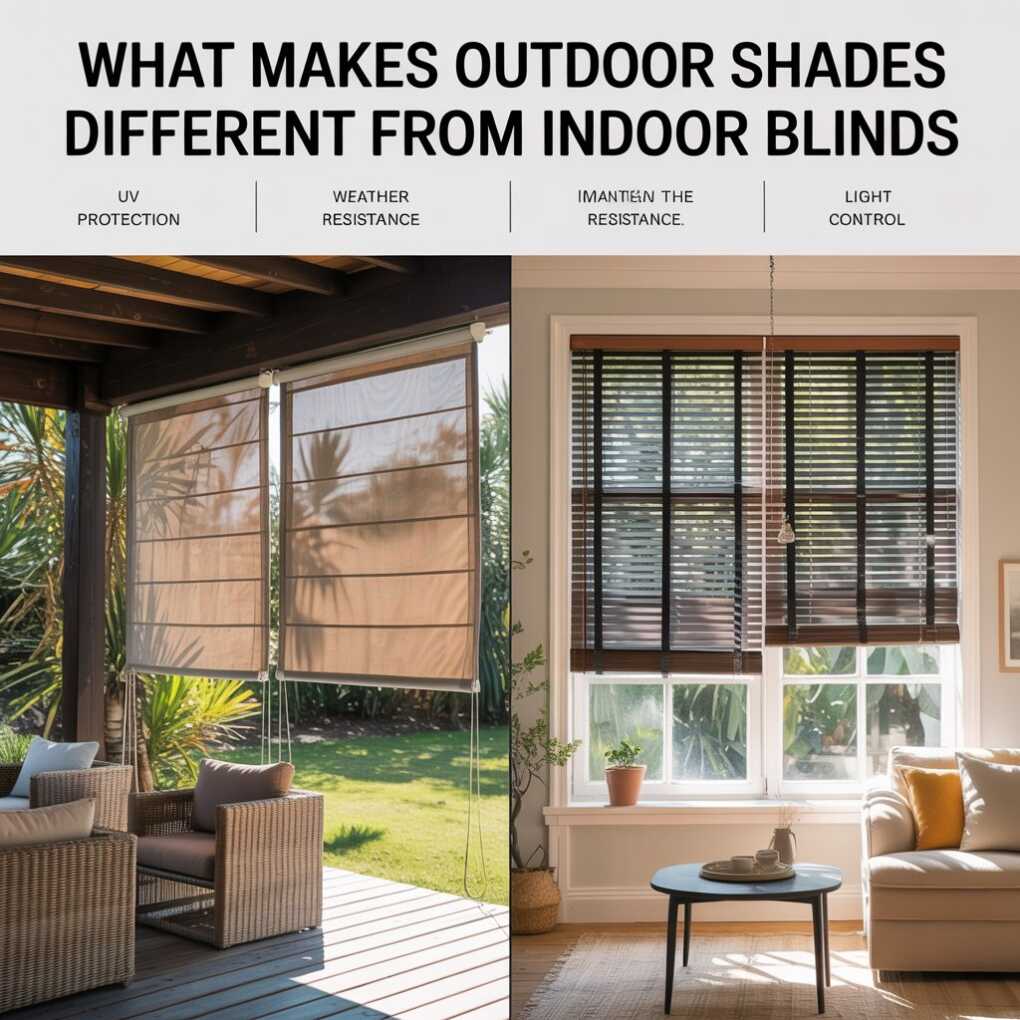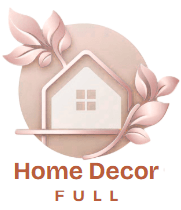When it comes to controlling light, heat, and privacy in your home, both indoor blinds and outdoor shades play crucial roles — but they serve very different purposes. While indoor blinds enhance interior comfort and style, outdoor shades are designed to tackle harsh weather, protect outdoor areas, and improve energy efficiency from the outside in.
At Outdoor Shades WA, the focus is on creating shading solutions that not only look great but also withstand Western Australia’s tough climate. Understanding what makes outdoor shades different from indoor blinds can help homeowners make the right choice for every part of their home or business.
Let’s explore the core differences between these two window treatment options, their materials, functionality, and benefits — and why choosing the right one for the right environment truly matters.

Designed for Different Environments
The most obvious distinction between outdoor shades and indoor blinds lies in where they’re used — but this difference goes far beyond location.
Indoor blinds are primarily made for aesthetics, privacy, and light control. They’re designed for comfortable, temperature-controlled environments where exposure to sunlight and weather elements is limited.
Outdoor shades, on the other hand, are built to withstand the elements. They’re engineered to resist sun, wind, rain, and even salt air — making them ideal for patios, verandas, alfresco dining areas, and windows that face direct sunlight.
As Greg Palmer, a shading specialist and product consultant, explains:
“Outdoor shades are your home’s first line of defense against the weather. By stopping UV rays and heat before they hit the glass, they dramatically reduce indoor temperatures and protect furnishings from fading.”
This ability to block heat before it enters the home gives outdoor shades a significant advantage when it comes to energy efficiency.
Material Strength and Durability
Another key difference lies in the materials used. Indoor blinds are often made from lighter fabrics such as polyester, PVC, or wood composites that complement interior design styles.
Outdoor shades, however, must endure Australia’s intense UV radiation and shifting weather conditions. They’re constructed using high-performance materials like:
● Marine-grade fabrics (such as acrylic or PVC-coated mesh) that resist mold and mildew.
● Aluminium components that won’t rust or warp in humid environments.
● UV-stabilised coatings that maintain colour and strength over time.
Greg Palmer notes:
“The materials used for outdoor shades aren’t just tougher — they’re tested for endurance. They’re engineered to perform for years, even under constant sun exposure and high winds.”
This robustness not only enhances longevity but also ensures consistent performance and safety, especially in coastal or high-temperature areas.
Functional Goals: Protection vs. Aesthetics
While indoor blinds focus heavily on interior design and privacy, outdoor shades are performance-driven.
Indoor blinds serve to:
● Control the amount of natural light entering the room.
● Add visual warmth or style to interiors.
● Provide privacy from neighbouring properties.
Outdoor shades are designed to:
● Reduce solar heat gain and glare.
● Shield patios, decks, and alfresco spaces from sun, wind, and rain.
● Create comfortable outdoor living zones all year round.
At Outdoor Shades WA, many clients are surprised by how effectively outdoor shades enhance indoor comfort too. By blocking up to 90% of heat before it reaches the glass, they make indoor cooling systems far more efficient — reducing energy consumption and lowering power bills.
Mechanisms and Control Systems
The way each product operates also differs significantly.
Indoor blinds usually rely on manual systems such as pull cords, chains, or wands. While modern versions may include motorisation, their movement is lightweight since they’re not designed to resist wind pressure or outdoor exposure.
Outdoor shades, in contrast, often feature heavy-duty mechanisms, including:
● Stainless steel cables or tracks for wind stability.
● Spring-loaded tension systems to prevent flapping.
● Motorised or smart automation controls for convenience.
These features allow homeowners to raise, lower, or tilt shades effortlessly — even during changing weather conditions.
Greg Palmer adds:
“Modern outdoor shades are increasingly automated. With smart home integration, you can control them remotely based on sunlight levels, temperature, or even weather forecasts.”
This innovation means outdoor shades not only protect your home but also enhance its technological sophistication.
Thermal Performance and Energy Efficiency
One of the most important benefits of outdoor shades is their impact on thermal regulation.
Indoor blinds help reduce glare and provide minor insulation, but they can only do so much once heat has already entered through the glass. Outdoor shades intercept sunlight before it hits the window, reducing indoor temperatures by several degrees.
According to industry research, external shading can block up to 80% of solar heat gain, significantly reducing the need for air conditioning.
At Outdoor Shades WA, this principle forms the foundation of their design approach. Their shading solutions combine energy savings with style, helping homes stay cooler in summer and more comfortable year-round.
Weather Resistance and Maintenance
Maintenance needs also vary widely between the two.
Indoor blinds are relatively low maintenance — usually requiring a light dusting or gentle wipe-down. But outdoor shades face environmental exposure daily and must be cleaned differently.
High-quality outdoor shades are designed for this purpose. Fabrics are mold-resistant, easy to clean, and quick-drying, meaning regular rinsing with mild detergent is often enough to maintain them.
The durability of outdoor shades also prevents weather damage to adjoining structures — by reducing the impact of sun, rain, and wind on patios, decks, and windows.
Greg Palmer advises:
“Consistent cleaning and maintenance extend the lifespan of outdoor shades significantly. A simple rinse every few months can keep them looking and performing like new.”
Proper care ensures that outdoor shades remain both functional and aesthetically pleasing for years to come.
Design and Aesthetic Differences
Indoor blinds come in a wide range of colours, materials, and textures designed to enhance interior décor. Venetian, roller, vertical, and Roman blinds all serve different stylistic purposes, allowing homeowners to fine-tune their indoor ambiance.
Outdoor shades also offer design flexibility, but their aesthetic is typically minimal and architectural. Their purpose is to blend with exterior façades, pergolas, and patios — offering elegance without compromising durability.
Many modern outdoor shades feature sleek aluminium cassettes and neutral fabric tones that integrate seamlessly with contemporary architecture. This balance between form and function is what sets premium outdoor shading apart from simple sun-blocking solutions.
Cost and Value Considerations
While outdoor shades generally cost more upfront than indoor blinds, they offer superior long-term value. Their weather-resistant design, energy savings, and property-enhancing qualities make them a smart investment for both residential and commercial properties.
Homeowners often see returns through:
● Lower energy bills.
● Increased usability of outdoor areas.
● Extended furniture and flooring lifespan due to UV protection.
In contrast, indoor blinds are more affordable initially but may require more frequent replacement if exposed to sunlight or moisture.
Conclusion: Two Solutions, Two Purposes — One Comfortable Home
Both indoor blinds and outdoor shades play important roles in enhancing comfort, privacy, and energy efficiency — but they’re designed for entirely different challenges. Indoor blinds refine your living spaces from within, while outdoor shades defend your home against the elements from without.
By investing in quality outdoor shades, you’re not only improving comfort but also extending the life of your interiors and increasing energy efficiency.
At Outdoor Shades WA, the focus is on crafting solutions that are stylish, functional, and built to last — ensuring your home stays cool, comfortable, and protected all year round.
As Greg Palmer sums up:
“Indoor blinds finish your interiors beautifully — but outdoor shades protect your entire home. Together, they’re the ultimate comfort system.”
Choosing the right shading solution depends on your goals, but understanding the difference ensures you make a smart investment in your property’s comfort, style, and sustainability.
